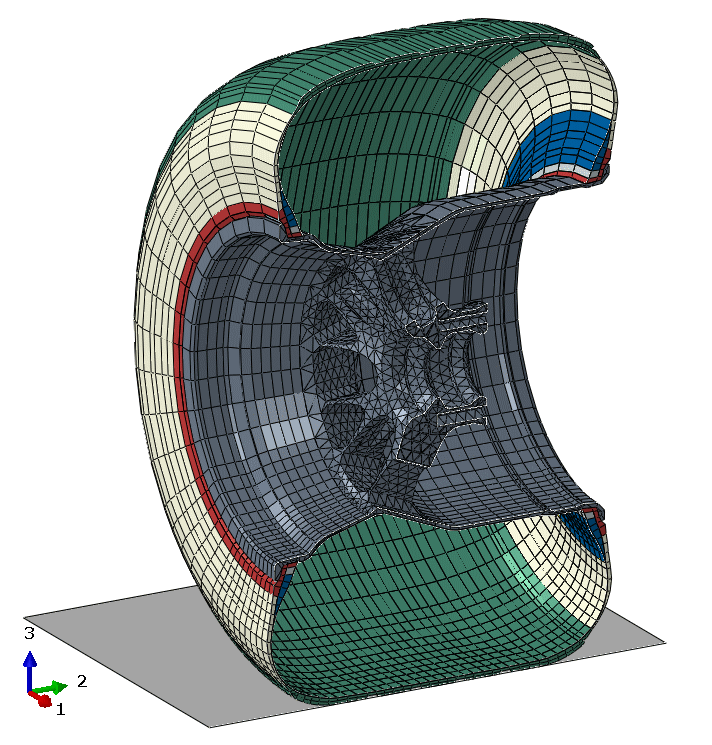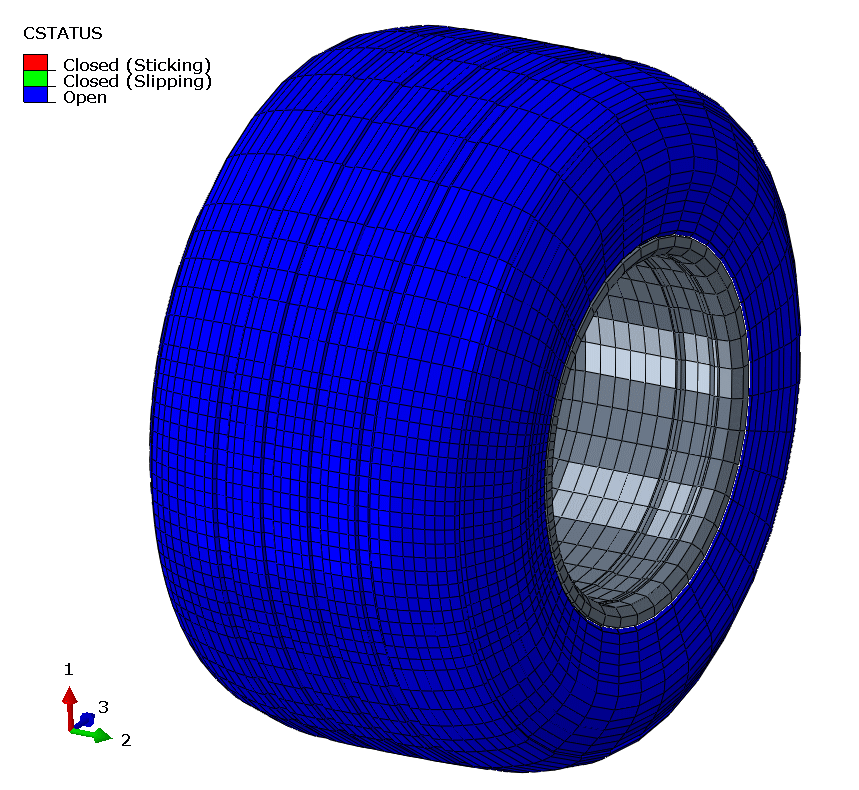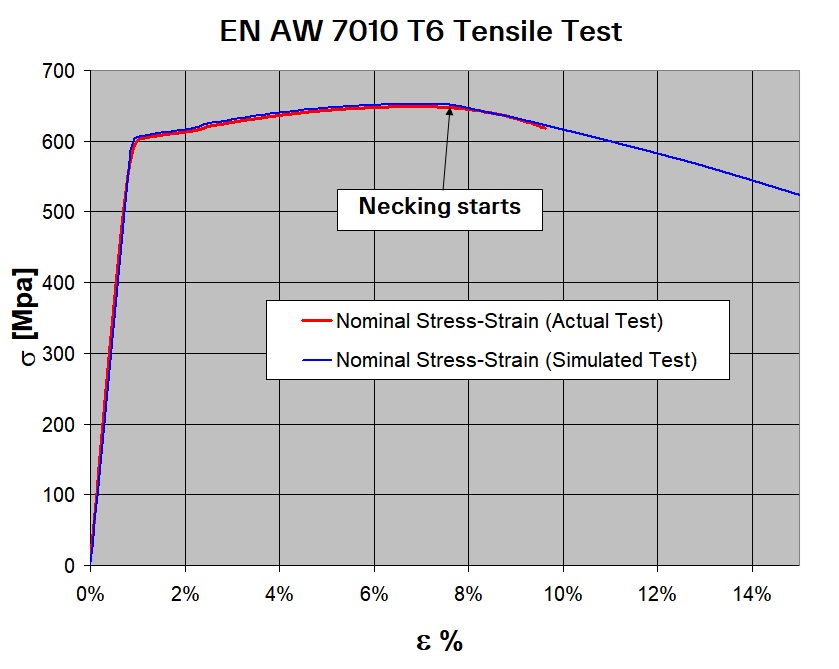Applications
Here are some examples of high level simulations taken from different fields of mechanical engineering.


Formula 1 Wheel and Tire
Bonding Behaviour
Bird Strike & Impact analysis
Tensile Test Simulation
Having the stress-strain curve of a given material it is possible to precisely reproduce the uniaxial tensile test on a round coupon.
By knowing additional material data, it is also possible to reproduce what happens after the necking start and up to the material failure, as shown in the lug failure here below (Non Linear Static Solution).

Lug Failure
Charpy Test
As for lug failure, knowing some additional parameters for the material behaviour (in this case the material used is the same as for the tensile test above), it is possible to simulate the Charpy test (Dynamic Explicit Solution).
3D Thread
In general in a Finite Element Model it is not necessary to detail a bolted joint up to the level here represented. Indeed in most of the cases connector or beam elements are used to extract the forces used to asses fasteners in general, by using well established formulas or special design criteria. Nevertheless in some special circumstances a deeper investigation is required: the model here was used to check the relation between the tightening torque and the generated preload as a function of different friction coefficients (Non Linear Static Solution).
Sloshing
Gyroscope
Simulation can also be fun! Raise your hand if you have never played with a gyroscope. Represented her is what happens when the gyroscope is not rotating (first video) while the gravity acceleration is acting, and when it is actually rotating (second and third videos): Axial Parallelism and Axial Precession are well know phenomena that can be analytically described. But also simulated (Dynamic Implicit Solution).
Newton Cradle
Privacy Settings
This website uses cookies to improve your experience while you navigate through the website.
View the Cookie Policy View the Personal Data Policy
Google Analytics is a web analytics service provided by Google Ireland Limited ("Google"). Google uses the collected personal data to track and examine the usage of this website, compile reports on its activities, and share them with other Google services. Google may use your personal data to contextualize and personalize the ads of its advertising network. This integration of Google Analytics anonymizes your IP address. The data sent is collected for the purposes of personalizing the experience and statistical tracking. You can find more information on the "More information on Google's handling of personal information" page.
Place of processing: Ireland - Privacy Policy
Additional consents:
